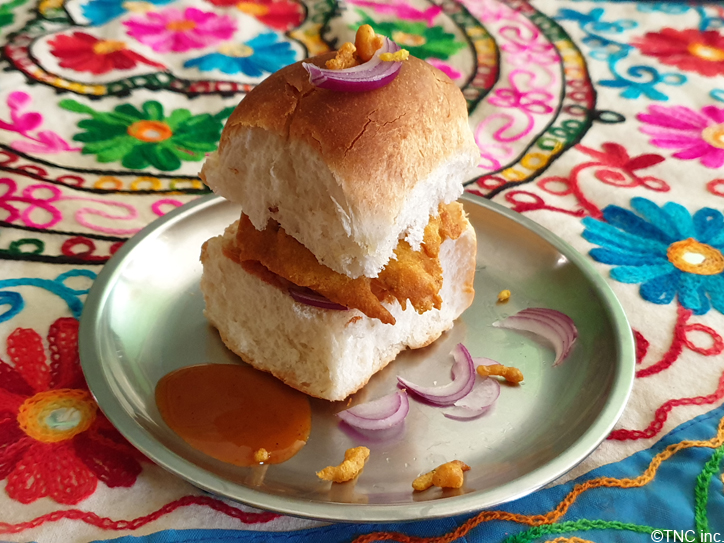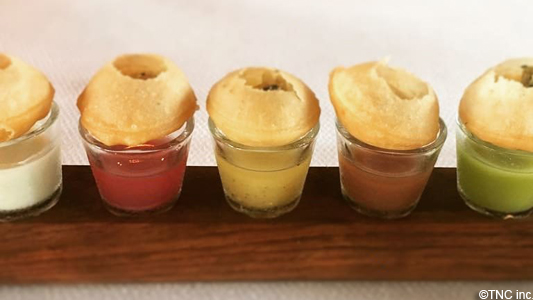[India] Flexible ideas to turn a classic dish into a culinary trend / Creative dishes that combine two types of cuisine are popular
- Release date: Aug 30, 2019
- 2264 Views

Vada Pav has become a new street food staple.
Restaurants, cafes, and street stalls in urban areas are beginning to offer unique combinations of two classic dishes. In Mumbai, for example, Vada Pav has become a street food staple: Vada is a fried bean doughnut, originally a South Indian delicacy, and Pav is the bread of Pav Bhaji, a vegetable curry served with soft bread, a fast food in India. Combining the two, Vada Pav is the Indian version of a hamburger with a fried doughnut sandwiched between soft bread. In Mumbai, Vada Pav is more popular than McDonald's burgers, and 2 million of them are consumed every day. Since it is a cheap and easy snack, it has become popular among a wide range of people, from the upper class to the poor, and has spread not only to Mumbai but also to the whole of India, becoming a standard street food. In addition, at a trendy restaurant in Delhi, there is a dish that combines the popular butter chicken curry with kichuri, an Indian porridge made of soft boiled beans and rice, which has surprised Indians and has become a hot menu item. Other trends include unique ways of presenting food, such as offering standard dishes in a style that has never been seen before.

Until now, India has had restrictions on food ingredients due to religious issues, so there have not been many citizens who like to be adventurous in the world of food. However, it can be said that the young and trendy urban Indians enjoy not only the taste but also the novelty and unexpectedness. Originally, Mumbaiites are progressive and like new and interesting things, so they are more receptive to unexpected ideas and challenges than residents of other regions. Another influence is the increasing presence of various international cuisines and the acceptance of cultures from developed countries, which has led to globalization and less religious beliefs.
This article is co-authored by TNC Lifestyle Researcher (http://lifestyle.tenace.co.jp/) and Intage's Global Researcher. Translated with AI Translator-

Author profile
TNC ASIA Trend Lab
TNC ASIA Trend Lab is an information organization run by TNC Inc. that researches and shares trends in Asia. It supports corporate marketing activities by finding insights from trends rooted in the lifestyles and habits of local consumers. http://lifestyle.tenace.co.jp/
-

Editor profile
Intage Inc.
***
 Global Market Surfer
Global Market Surfer CLP
CLP